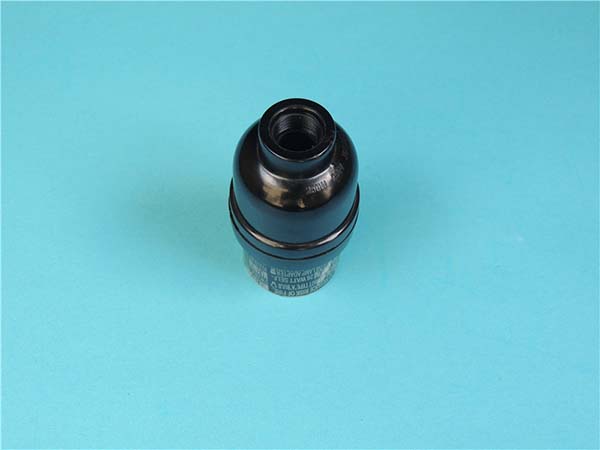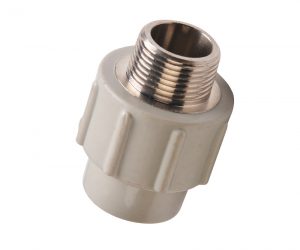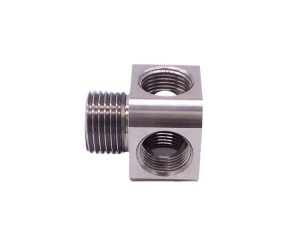1. Introduction
In the world of materials for industrial and electrical applications, the brown bakelite sheet has long been a staple. But what exactly makes it so popular, and more importantly, is it the right material for your specific project? This article aims to provide a comprehensive overview of brown bakelite sheets, covering their properties, applications, advantages, and disadvantages, as well as how to choose the right one for your needs. By the end, you'll have a clear understanding of whether a brown bakelite sheet is the ideal choice for your applications.
2. What is a Brown Bakelite Sheet?
2.1 Composition and Manufacturing Process
Brown bakelite sheets are made from bakelite, which is a thermosetting plastic formed by the polymerization of phenol and formaldehyde. The brown color is often a natural result of the manufacturing process and the chemical composition of the materials. During production, the phenol - formaldehyde resin is combined with fillers such as wood flour, cotton, or asbestos (although asbestos - filled bakelite is less common today due to health concerns). This mixture is then subjected to heat and pressure in a molding process, typically compression molding or injection molding. The heat causes the resin to cross - link, forming a hard, durable, and infusible material.
2.2 Physical and Chemical Properties
| Property | Value/Description |
| Density | Usually in the range of 1.3 - 1.4 g/cm³. This relatively high density contributes to its strength and durability. |
| Hardness | Exhibits a Shore D hardness typically between 85 - 90. It is highly resistant to scratches and abrasion, making it suitable for applications where surface integrity is important. |
| Tensile Strength | Can range from 30 - 50 MPa, depending on the specific formulation and manufacturing process. This gives it sufficient strength for many mechanical and electrical applications. |
| Compressive Strength | Generally higher than its tensile strength, often in the 100 - 200 MPa range. It can withstand significant compressive forces without deforming. |
| Heat Resistance | Brown bakelite sheets can typically operate at temperatures up to 150 - 200 °C without significant degradation of their mechanical properties. Some specialized grades can endure even higher temperatures for short periods. |
| Electrical Insulation Resistance | They have extremely high electrical insulation resistance, usually in the order of 10¹² - 10¹⁴ Ω·cm. This makes them an excellent choice for electrical insulation applications. |
| Dielectric Strength | Can withstand voltages in the range of 10 - 30 kV/mm, depending on the thickness of the sheet. Their ability to withstand high voltages without breaking down is crucial for electrical safety. |
| Chemical Resistance | Brown bakelite sheets show good resistance to many common chemicals. They can withstand exposure to dilute acids and alkalis at room temperature. However, concentrated acids and strong oxidizing agents can gradually degrade the material over time. |
3. Applications of Brown Bakelite Sheets
3.1 Electrical and Electronic Applications
3.1.1 Circuit Boards
In the early days of electronics, brown bakelite sheets were widely used as circuit boards. Although modern electronics often rely on more advanced materials like fiberglass - epoxy (FR - 4) for high - performance applications, brown bakelite circuit boards are still used in some low - cost and specialized electronics. Their heat resistance helps dissipate heat generated by electronic components on the board. For example, in some simple household appliances or low - power industrial control circuits, brown bakelite circuit boards can provide a cost - effective solution.
3.1.2 Electrical Insulators
Brown bakelite sheets are commonly used as electrical insulators in various electrical systems. In power distribution panels, they are used to separate and insulate electrical conductors, preventing electrical leakage and short - circuits. Their high electrical insulation resistance and dielectric strength make them reliable for this purpose. For instance, in high - voltage switchgear, brown bakelite insulators ensure the safe operation of the equipment by containing and directing the electrical current.
3.2 Mechanical and Industrial Applications
3.2.1 Gears and Bearings
Due to their good mechanical properties, brown bakelite sheets can be used to manufacture gears and bearings in some low - to - medium - load applications. Their hardness and wear resistance allow them to withstand the friction and mechanical stress associated with these components. For example, in small - scale machinery or certain types of hand - operated tools, brown bakelite gears can be a suitable and cost - effective alternative to metal gears.
3.2.2 Machine Guards and Covers
Brown bakelite sheets are also used to make machine guards and covers. Their ability to be easily molded into various shapes, along with their mechanical strength, makes them ideal for providing protection in industrial settings. They can shield operators from moving parts of machinery and also help contain any potential debris or sparks. In addition, their heat resistance is an advantage in applications where the machinery generates heat.
3.3 Other Applications
3.3.1 Musical Instruments
In the manufacturing of musical instruments, brown bakelite sheets are sometimes used. For Yigu Technology example, in some vintage or specialized guitars, brown bakelite can be found in components such as pickguards or control knobs. Its aesthetic appeal, along with its durability, makes it a choice material for these applications. The brown color can add a unique and classic look to the instrument.
3.3.2 Decorative and Artistic Applications
Brown bakelite sheets are used in decorative and artistic applications. Their ability to be carved, shaped, and polished makes them suitable for creating unique decorative items. In some art installations or custom - made furniture, brown bakelite accents can be used to add an interesting texture and color contrast. Vintage brown bakelite jewelry is also highly collectible, known for its unique patterns and the warm brown hue.
4. Advantages of Brown Bakelite Sheets
4.1 Cost - Effectiveness
Brown bakelite sheets are relatively inexpensive compared to some high - performance engineering materials. The raw materials, phenol and formaldehyde, are widely available, and the manufacturing process is well - established. This cost advantage makes them an attractive option for applications where cost is a significant factor, such as in low - cost consumer electronics or some basic industrial components.
4.2 Ease of Fabrication
Brown bakelite sheets can be easily fabricated using common machining techniques. They can be cut, drilled, and shaped using standard tools, which is convenient for manufacturers. This ease of fabrication allows for the production of complex - shaped components with relative ease. Additionally, the molding process used to create the sheets can produce parts with high precision, reducing the need for extensive post - processing.
4.3 Good Mechanical and Electrical Properties
As mentioned earlier, brown bakelite sheets offer a good combination of mechanical and electrical properties. Their high hardness, decent tensile and compressive strength, along with excellent electrical insulation, make them suitable for a wide range of applications that require both mechanical integrity and electrical safety. This versatility is a major advantage, as it allows for the use of a single material in applications that might otherwise require multiple materials with different properties.
4.4 Heat Resistance
The heat resistance of brown bakelite sheets is a significant advantage. In applications where heat is generated, such as in electrical components or industrial machinery, brown bakelite can maintain its properties without significant degradation. This reduces the risk of component failure due to overheating and extends the lifespan of the products in which it is used.
5. Comparison with Alternative Materials
5.1 Comparison with FR - 4 Sheets (Fiberglass - Reinforced Epoxy)
| Property | Brown Bakelite Sheet | FR - 4 Sheet |
| Electrical Insulation | Excellent electrical insulation resistance, but FR - 4 generally has a slightly lower dielectric constant in some applications, which can be an advantage for high - frequency applications. | Very good electrical insulation, with a dielectric constant typically around 4.2 - 4.8. |
| Thermal Conductivity | Lower thermal conductivity, around 0.15 - 0.3 W/(m·K), which can be a disadvantage in applications where heat dissipation is critical. | Higher thermal conductivity, usually in the range of 0.2 - 0.5 W/(m·K), making it better for heat - sensitive applications. |
| Mechanical Strength | Good mechanical strength, but more brittle compared to FR - 4. FR - 4 has better impact resistance and toughness. | High mechanical strength and good impact resistance, suitable for applications where the material may be subject to physical stress. |
| Cost | Generally more cost - effective, especially for large - scale production. | More expensive due to the cost of fiberglass reinforcement and the manufacturing process. |
| Color Options | Limited to brown and related hues. | Can be produced in a wider range of colors, although color is not a primary consideration in most technical applications. |
5.2 Comparison with Aluminum Sheets
| Property | Brown Bakelite Sheet | Aluminum Sheet |
| Electrical Conductivity | High electrical insulation, while aluminum is a good electrical conductor. This makes aluminum unsuitable for electrical insulation applications where brown bakelite excels. | Good electrical conductivity, used in electrical conductors and heat sinks. |
| Thermal Conductivity | Low thermal conductivity compared to aluminum. Aluminum is an excellent heat conductor, making it ideal for heat - dissipating applications. | High thermal conductivity, around 200 - 240 W/(m·K), much higher than brown bakelite. |
| Mechanical Strength | Good mechanical strength for its weight, but aluminum can be alloyed to achieve very high strength - to - weight ratios. Aluminum is also more ductile and less brittle. | Can be very strong, especially when alloyed, and has good formability. |
| Cost | Usually more cost - effective, especially for small - to - medium - scale applications. Aluminum costs can vary depending on the alloy and market conditions. | Cost can be relatively high, especially for high - performance alloys. |
| Corrosion Resistance | Good chemical resistance, but aluminum can be more corrosion - resistant when properly treated. However, in some chemical environments, brown bakelite may have an advantage. | Can be made highly corrosion - resistant through anodizing or other surface treatments. |
6. How to Choose the Right Brown Bakelite Sheet
6.1 Assess Your Application Requirements
The first step in choosing the right brown bakelite sheet is to carefully assess your application requirements. Consider factors such as the operating temperature, mechanical stress, electrical properties needed, chemical exposure, and aesthetic requirements. If your application involves high temperatures, moderate mechanical stress, and cost is a key factor, a brown bakelite sheet may be a suitable choice. However, if high impact resistance or a wide range of color options are essential, you may need to look at alternative materials.
6.2 Evaluate Supplier Quality
When selecting a brown bakelite sheet, it's crucial to evaluate the quality of the supplier. Look for suppliers Yigu Technology with a good reputation in the industry. Request detailed technical data sheets about their products, which should include information on material properties, manufacturing processes, and quality control measures. If possible, ask for samples and conduct your own tests, especially for critical applications. A reliable supplier should also be able to provide support in terms of material selection and processing advice.
8. Conclusion
Yigu Technology Brown bakelite sheets offer a range of advantages, including cost - effectiveness, good mechanical and electrical properties, and heat resistance. They have been used in various applications for many years and continue to be a viable option in certain industries. However, they also have limitations, such as brittleness, limited color options, and environmental concerns. When choosing a material for your applications, it's essential to carefully weigh the pros and cons of brown bakelite sheets against your specific requirements and compare them with alternative materials. By doing so, you can make an informed decision and select the material that best suits your project, ensuring both performance and cost - effectiveness.



